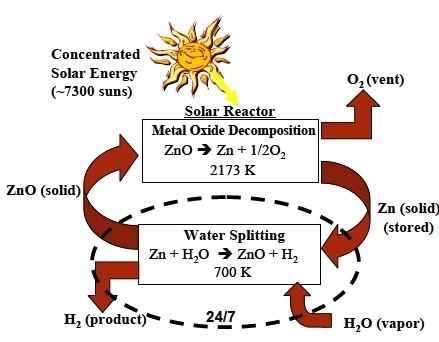 | ||
The zinc–zinc oxide cycle or Zn–ZnO cycle is a two step thermochemical cycle based on zinc and zinc oxide for hydrogen production with a typical efficiency around 40%.
Process description
The thermochemical two-step water splitting process uses redox systems:
For the first endothermic step concentrating solar power is used in which zinc oxide is thermally dissociated at 1,900 °C (3,450 °F) into zinc and oxygen. In the second non-solar exothermic step zinc reacts at 427 °C (801 °F) with water and produces hydrogen and zinc oxide. The temperature level is realized by using a solar power tower and a set of heliostats to collect the solar thermal energy.
References
Zinc–zinc oxide cycle Wikipedia(Text) CC BY-SA
